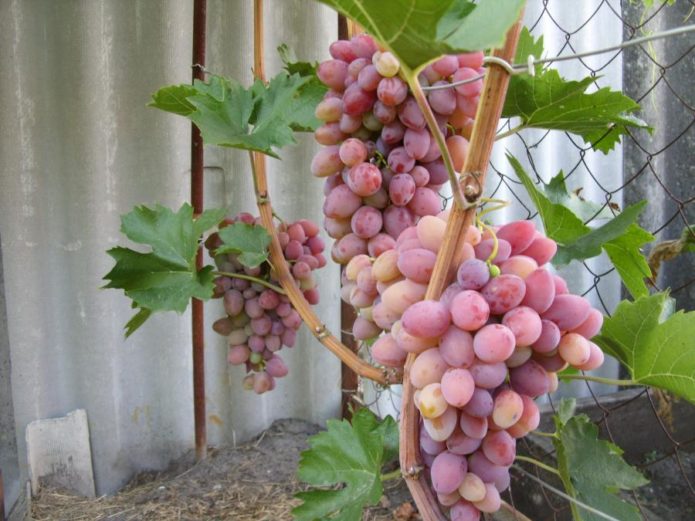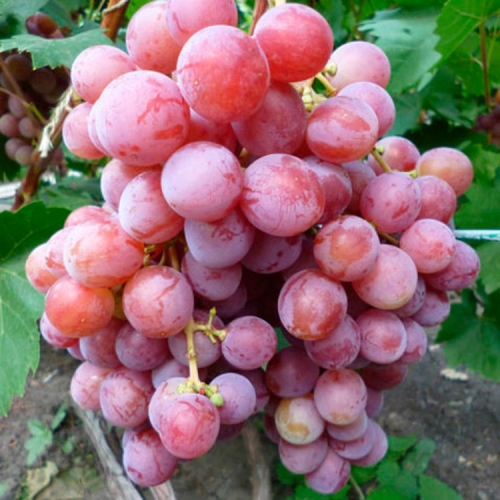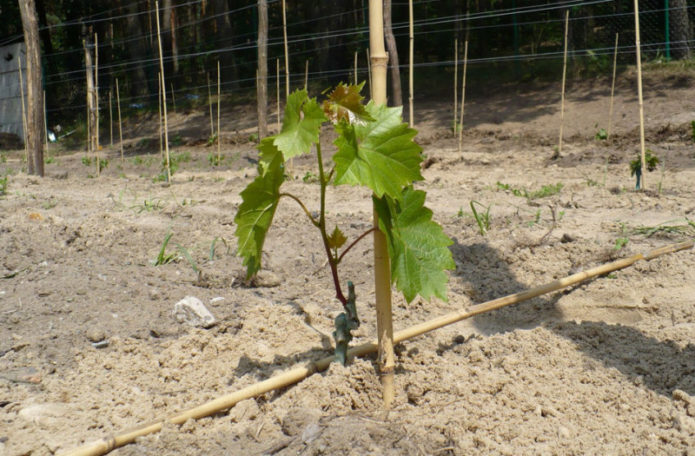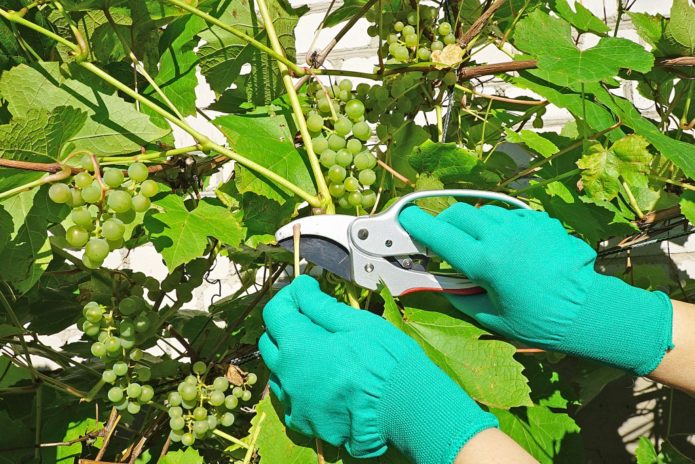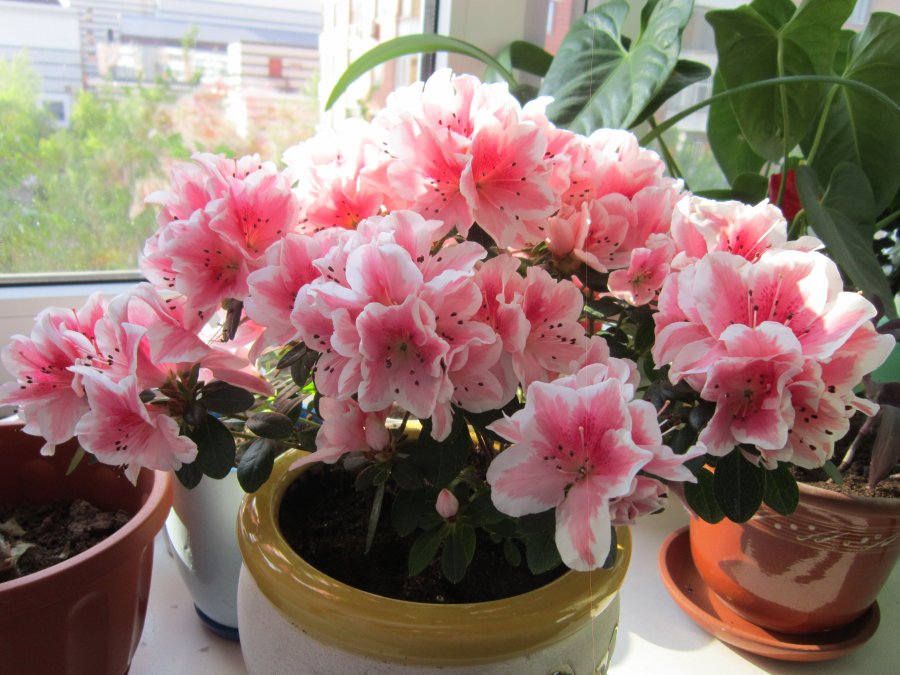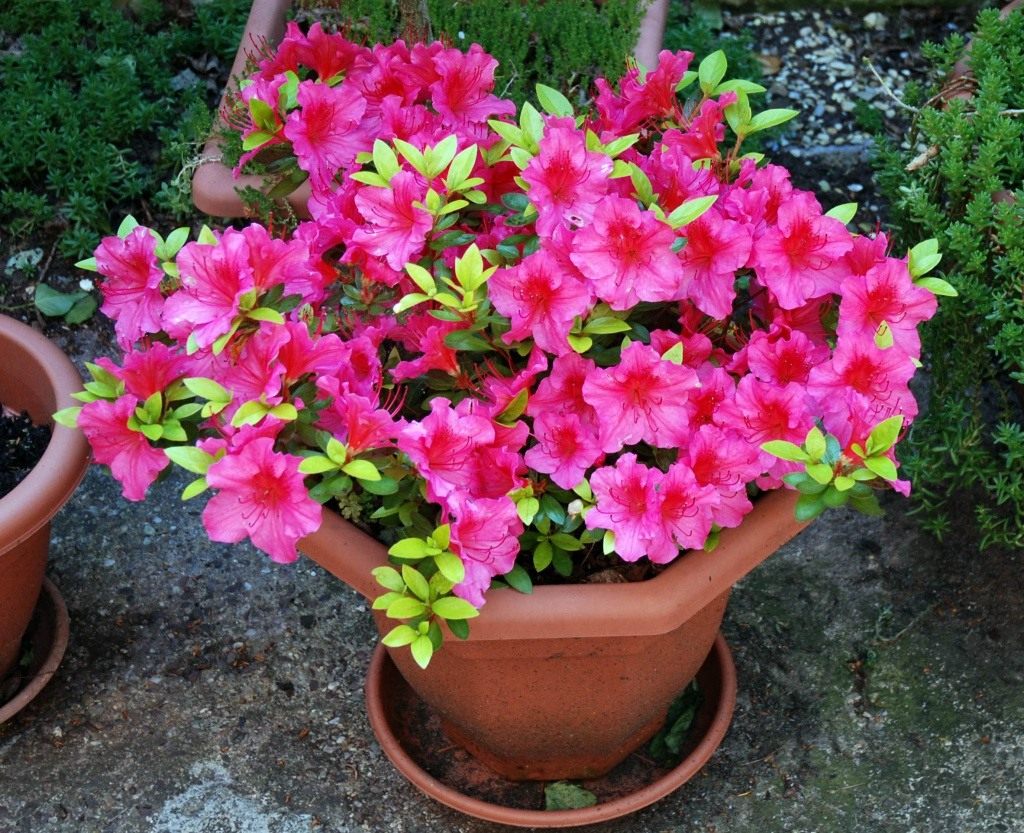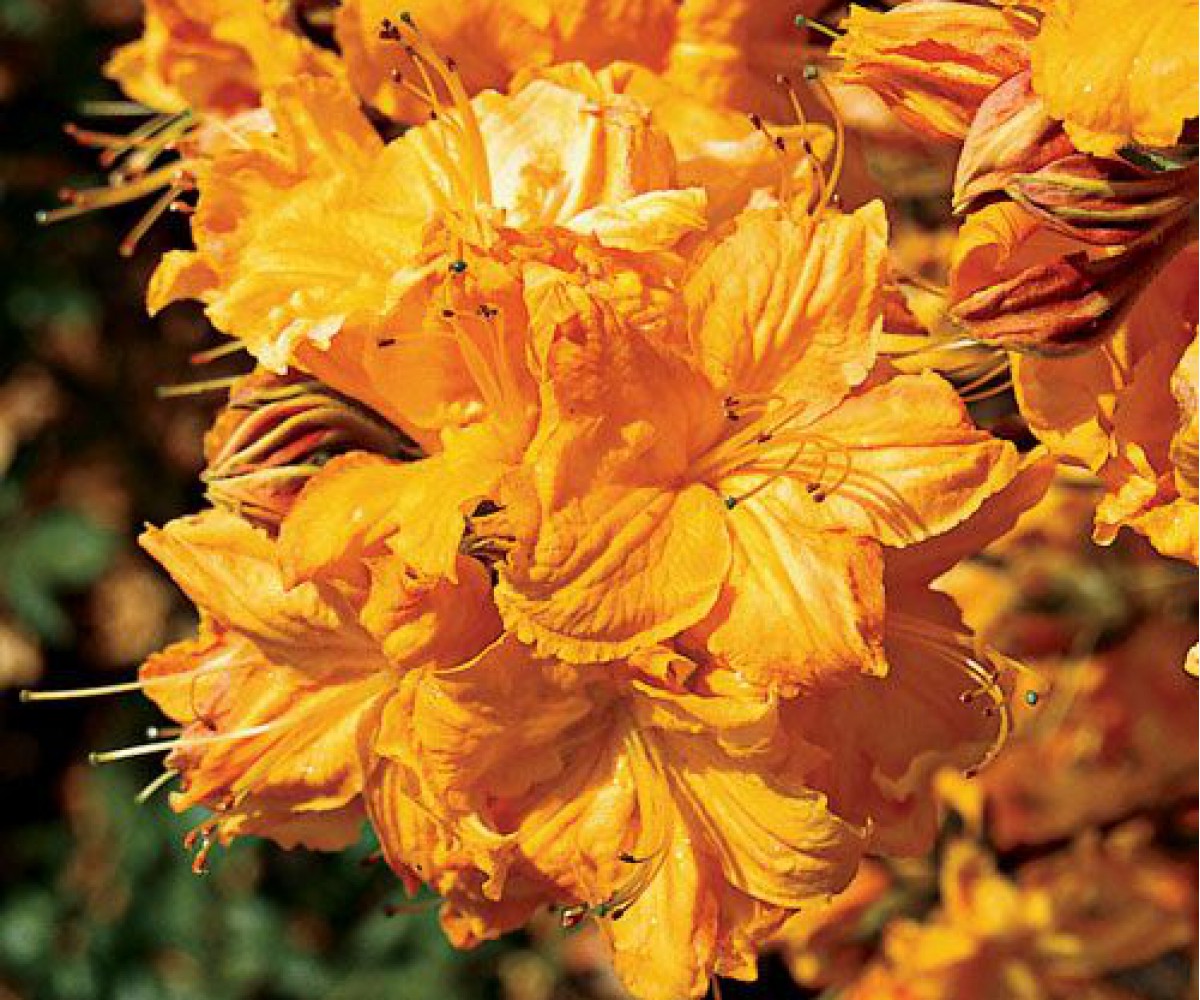This is not to say that Azalea grapes are among the best varieties, but it is a very good grape, belonging to the number of early grape varieties. It is distinguished by increased frost resistance, not capricious in leaving, Azalea berries have a rather good taste. All this led to the fact that the variety is planted by both hobbyists and farmers who grow grapes for commercial purposes.
Content
Breeding history, description and characteristics of the Azalea grape variety
In recent years, many grape varieties have appeared that can be grown in the center of Russia and even in the northern regions. Table varieties are especially appreciated, that is, those whose fruits are not suitable for winemaking, but primarily for direct fresh consumption. And varieties of early and very early ripening are especially popular. It is among them that the Azalea grape, created by the hands of the amateur winegrower V.U.Kapelyushny, who unfortunately left us on May 9, 2017, belongs to them.
Vasily Ulyanovich was a transport engineer by his basic education, but since the end of the 1960s. became interested in viticulture. Very quickly he switched to the cultivation of table varieties, and at the end of the last millennium he created the agricultural enterprise "Nadezhda", the head of which he was until his death. This enterprise grows the most popular table varieties. Most of them are very resistant to various diseases and phylloxera.
At the end of the last century, cooperating with VNIIViV them. Ya. I. Potapenko, Vasily Ulyanovich began experiments on the selection of grapes, using for this the most stable forms from his vineyard: Talisman, Arcadia, etc. Thus, the Azalea grapes were bred, the "parents" of which were the varieties Delight red, Nadezhda Aksayskaya and pollen from a number of other varieties. The result is a variety characterized by a strong vine and early ripening berries of an interesting color. Increased frost resistance has led to the fact that Azalea can be found in almost all regions of our country, where it is possible, in principle, to grow grape plants.
Azalea grape bushes are not very tall, they can be called medium in size: annual shoots grow up to two meters in length. Sprawling bush, branched. Shoots ripen almost to the full length, and this happens long before the onset of frost. The strong root system allows the grapes to find moisture and nutrition deep and far from the root base. Azalea cuttings root well, but many experts prefer to plant them in the stem of other, taller varieties.
The frost resistance of the variety is slightly higher than average: an uncovered vine can withstand frosts down to -25 aboutWith no damage. However, in the middle lane, it should be removed from the trellises for the winter and slightly covered from frost.Resistance to diseases is average or slightly above average: 1-2 standard preventive treatments in most cases guarantee the absence of diseases, unless, of course, we consider the seasons that are extremely unfortunate in terms of weather.
The variety is relatively early ripening: the first berries can ripen in the second or third year after planting the grapes. The flowers are bisexual, which means that Azaleas do not need nearby bushes of other varieties, it perfectly pollinates itself. Signal clusters ripen 90–95 days after the first leaves bloom, and at the end of summer it is already possible to harvest the entire crop, which is assessed as high.
Conical clusters of large size: mostly their weight is about 800 g, but some specimens grow up to one and a half kilograms. The bunches are located on short comb, and the berries are loosely packed in them. Peeling is minimal. The transportability of the bunches is excellent, which allows the variety to be used commercially.
The berries are large, the main color is pink, but, depending on the light, different tones can prevail. The shape is slightly different from the perfectly round shape, but the elongation is small, the approximate size of the berry is 25 mm. The average weight is about 12 g, fruits heavier than 15 g are almost never found. The pulp is fleshy, with a high juice content, the taste is unremarkable. Despite the high sugar content of the juice (about 23%), the taste is not considered cloying, although the total acidity is low and amounts to about 5 g / l. The skin is very thin, does not interfere with the use of the fruit.
A positive point is that the crop lasts a long time on the bushes without harvesting, while the appearance and taste of the berries are preserved. Low and damage to the crop by wasps. The berries hardly crack, even in conditions of prolonged rains. The purpose of the fruits is universal, they are suitable for direct consumption and for various processing methods.
Video: Azalea grapes on the bushes
Features of planting and cultivation of Azalea grape varieties
Azalea is considered an unpretentious grape, it is not difficult to care for it. There is nothing special in his agricultural technology, this is a common frost-resistant early grape for table use. With the acquisition of elementary experience, it is better to find a cutting and graft it on an adult bush of a vigorous variety available on the site, but we must remember that not all grape varieties are able to grow together with any rootstocks. If successful, you can get a result in which the yield will be higher than that of self-rooted bushes. Of course, it is easier to purchase a ready-made seedling and plant it according to all the rules.
Since the crop ripens early and hangs on the bushes for a long time, it is quite enough for a small family to plant one Azalea bush, especially since it does not require pollinators.
If you plan to plant several bushes, leave a distance of about two meters between them. The place for landing should be chosen well-lit, sheltered from the influence of northern winds.
The variety is undemanding to soils, but preliminary digging of any site with the introduction of usual doses of fertilizers is required. During summer digging, long before the pit is prepared, 1-2 buckets of humus, a couple of liters of wood ash and a handful of azofoska are added per square meter of area. In the fall, they dig a planting hole with dimensions of 70 x 70 x 70 cm. On all soils, except sandy, drainage is placed on the bottom of the pit: a layer of 10–20 cm (depending on the density of the soil) of pebbles, expanded clay, etc. It is advisable to lay a pipe to the bottom of the hole, so that with its help water the young seedling directly into the root zone.
The lower half of the pit is filled with a mixture of soil and fertilizers (they make up about half of the volume), then just good soil is placed. In the spring, in April, the hole is torn open and the purchased seedling is buried deeply, leaving one or two buds outside. Pouring out two buckets of water, mulch the soil around the seedling with any loose material.
Caring for the bushes is usual: watering, feeding, pruning, preventive spraying, winter shelter. Abundant watering is required only in the first years of the seedling's life, then they must be carried out during the growth of berries and before winter, and besides these periods - only in case of very dry weather. It is advisable to do this in the evening using water heated in the sun. Watering is stopped 20-25 days before picking berries.
Feeding with organic matter is carried out by burying 1-2 buckets of humus in the pits in early spring or late autumn. Wood ash should be scattered often and a lot around the bushes, it is advisable to cover it shallowly with a hoe. In the evening before and after flowering, it is worth spraying the leaves with a weak solution of complex mineral fertilizer. While the bush is young, it is necessary to loosen the soil around it, remove weeds, and mulch. Mature bushes themselves inhibit weed growth.
Immediately after the opening of the bushes in the spring, it is worth spraying the vine with a solution of ferrous sulfate, which almost guarantees the absence of fungal diseases. If their signs appear, then at a later time it is necessary to use the Bordeaux mixture or the drug Ridomil Gold.
The most skilled job in the vineyard is pruning. In the spring, long before sap flow, only dead and broken vines can be cut. Throughout the summer, stepchildren and extra young shoots appearing in unnecessary places should be broken out, without waiting for them to begin intensive growth. It is worth breaking out the extra bunches if there are too many of them: this is the only way to achieve truly tasty and large berries. Finally, the bush is formed after leaf fall. For Azalea, medium pruning is carried out, leaving 6 to 8 buds on the shoots.
In the south, it is not required to cover this variety for the winter; in other regions, at the end of autumn, the vines are removed from the trellises and slightly covered. In most climatic ones, spruce branches of coniferous trees are enough for this, but we must not forget to put a “treat” for mice nearby - any poison: they love to gnaw the bark of grapes in winter. It is necessary to open the bushes from winter shelter only with the onset of stable spring weather.
Advantages and disadvantages of the variety in comparison with similar
If you remember that many experts call Azalea a very early ripening variety and compare it with similar modern varieties, then the comparison will not be in its favor: for example, there are many best examples of the taste of berries, in particular, Tason. There are grapes with more beautiful berries and much better disease resistance. But in general, Azalea is a very good early variety, the advantages of which include, for example:
- good taste of berries;
- high marketability of the crop;
- long-term preservation of fruits on the bushes;
- excellent transportability: the appearance and taste of berries do not change during long-distance transportation;
- very early maturation;
- good yield;
- self-pollination;
- the safety of berries in rainy weather;
- increased frost resistance.
There are not so many significant disadvantages of the variety, for example:
- insufficient disease resistance;
- the need to normalize the crop;
- the low size of the bushes, which is why it is often necessary to plant Azalea on other rootstocks;
- variable color of berries.
Despite some disadvantages, the variety is very popular both among summer residents and in industrial viticulture. It is not very capricious to care for, and its high frost resistance allows it to be grown in all regions. Summer ripening of the fruits gives reason to consider the variety as commercially viable.
Video: Azalea grapes in August
Variety reviews
In viticultural discussions, reviews about Azalea are rare, they are not always positive, which confirms the idea that the variety in question is quite common, it is not among the outstanding.
Say goodbye to Azalea.And this year there were no bunches of weight, the taste is just glucose in the shell, the color is gray-pink. They brought it to the market - they didn't look at it, gave it to the appendage ... Well, maybe it's good for the north - the vine ripens early, doesn't get sick, it's sweet ... I don't even know what else to add ... If the target is the market, then it's definitely better to plant Arkadia, Laura , Kodryanka, and a lot of things, but not Azalea!
This season Azalea practically did not color ... A small pink on the side ... and that's it. I don't even go to try it, I'm waiting for ripening. There were visitors to the vineyard today, and one of them was an Azalea fan. So he picked a berry for a test. Fully ripe! Even the bones are brown! akhar high, musktata or some other zest in the taste. What disappointed - the pulp is somewhat watery. The bunches are small (the bush is cut off in the fall for the opposite growth) and the berry is not large, about 10 g. I did not observe any diseases, the bush is clean, but the growth strength is rather weak (fed for slaughter!) One joy - ultra early!
In our vineyard some time ago the GF Azalea was tested (Delight red x a mixture of pollen of the varieties Taifi resistant and Nadezhda Aksayskaya). The form had a ripening period of 100-105 days, this is the second decade of August in the Kuban. We did not see large bunches and did not differ in the size of the berries: everything was at the level of Red Delight. The taste of the pulp with increased sugar accumulation and without any frills. Here the resistance to diseases was excellent and the vine ripened very well.
The Azalea grape variety is very easy to grow, often you can do without sheltering the bushes for the winter. The early ripening of the berries made it very attractive for planting to sell the berries on the market. Unpretentiousness to the conditions allows us to recommend it to summer residents who do not have a large reserve of free time.
